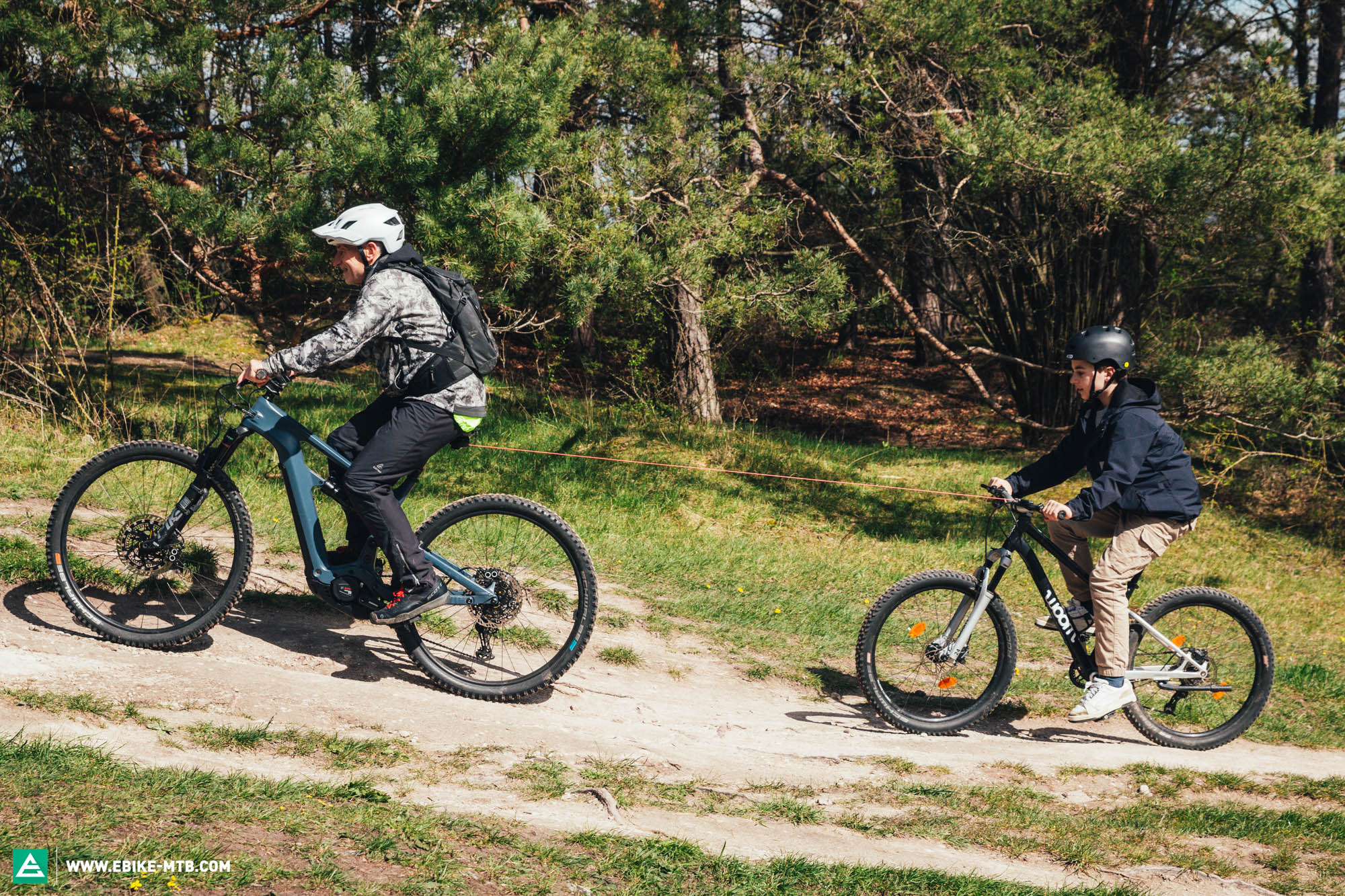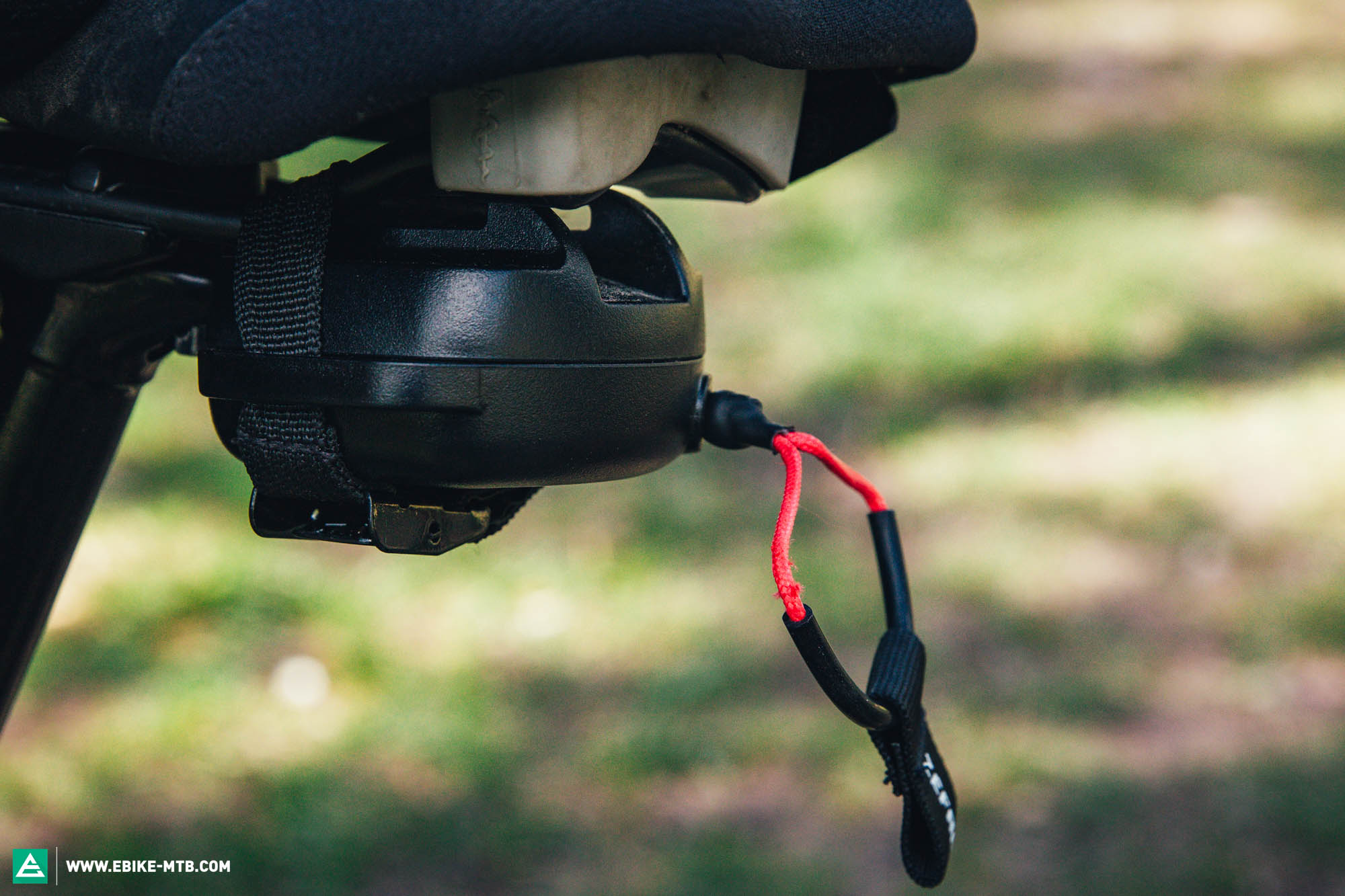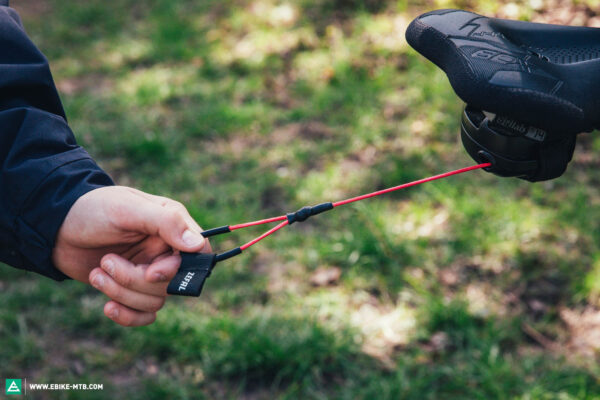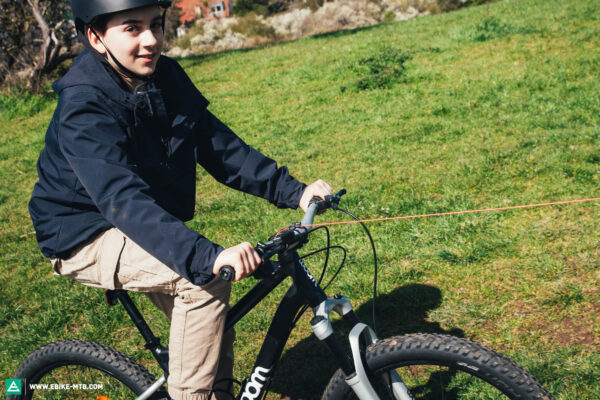Zéfal Bike Taxi in review
What service! The Zéfal Bike Taxi is a tow rope for one bike to pull another. With its easy assembly and handling, it promises to take you and your kids to destinations that would otherwise be too exhausting for the young shredders to reach. We put it to the test to find out how Zéfal implemented this idea and what you need to consider.

Many will be familiar with this situation: You want to go on a bike trip with your family, but the kids just aren’t fit enough or you’re the only one aboard an eMTB and want to help them get up the climbs. Cue the Zéfal Bike Taxi! Fully extended, the tow rope is 2 m long, which ensures a safe distance between the towing and towed bicycle. It promises to make long ascents a lot more manageable for young and less fit riders – it’s suitable for both adults and children thanks to a maximum pulling capacity of 90 kg – letting you climb to your heart’s content for € 49.95!

Fitment
The Zéfal Bike Taxi is quick and easy to attach to the underside of the saddle, where it remains during the entire ride, ready to spring into action whenever it’s needed. It’s held in place with a strap and an additional Velcro fastener on the saddle rails. If you come to an ascent that requires towing, you can simply hook the loop of the 2 m long rope over the stem of the bike you want to tow, and that’s all it takes to turn your bike into private shuttle service. You can attach the Bike Taxi to any saddle with aluminium rails, and the stem of the bike you’re towing should be clamped to the steerer tube with two bolts and have a notch for loop.

On the trail
Using the Bike Taxi is easy, and it’s convenient that the 2 m long tow rope is self-retracting. Once at the top, the child being towed can unhook the Bike Taxi themselves. The rope retracts and you can continue on your way. The whole process is a lot less cumbersome than other towing systems, which typically require you to completely detach the rope and stow it away. With Zéfal’s design, however, it stays on the bike and is immediately ready to be used again on the next climb. It’s certified to pull loads of up to 90 kg, and your towing speed shouldn’t exceed 10 km/h. It should be noted that the rope isn’t elastic, which means that the person being towed must pedal along as you pull away to avoid getting jerked forward when all the slack is taken up. You might want to practise this beforehand.


Conclusion
The Bike Taxi by Zéfal is the ideal companion for young families, where you must consider the abilities of the smallest and weakest members of the riding clan, helping to widen the horizon of possible routes. If you’re planning to tow adults, you should keep an eye on the maximum load and make sure that the dropper post isn’t fully extended. Overall, it’s a well thought-out and clever solution, but one that requires some practice to operate smoothly.
Tops
- compact and inconspicuous, stays on the bike even on longer rides
- attaches securely to the underside of the saddle
- certified to pull a maximum of 90 kg
- self-retracting tow rope that’s easy to unhook by the child being towed
Flops
- child must pedal along when pulling away to avoid being jerked forward
- for aluminium saddle rails only
- can only be used on stems that have a notch between the two clamping bolts
For more Information, visit Zéfal.com
Did you enjoy this article? If so, we would be stoked if you decide to support us with a monthly contribution. By becoming a supporter of E-MOUNTAINBIKE, you will help secure a sustainable future for high-quality cycling journalism. Click here to learn more.
Words: Susanne Feddersen Photos: Manne Schmitt








